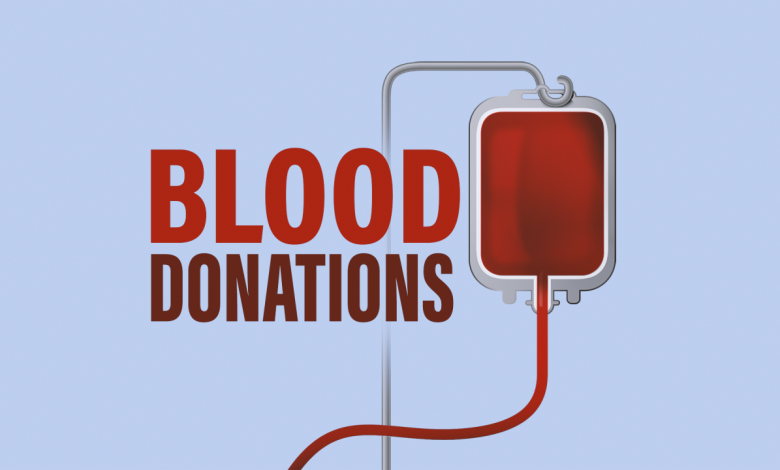blood donation website

The Importance of Blood Donation Websites: Saving Lives One Click at a Time
Blood donation website :
- https://dsclebanon.org/en/
- https://www.redcrossblood.org/
- https://www.moph.gov.lb/en/Pages/4/3262/blood-transfusion-
- https://www.ifrc.org/our-work/health-and-care/community-health/blood-donation
Blood donation is a critical and life-saving act that can make a significant difference in the lives of those in need. In Lebanon, where blood shortages have been a persistent issue, the establishment of blood donation websites has become increasingly crucial. These online platforms serve as a bridge between potential blood donors and individuals requiring blood transfusions, making it easier than ever to contribute to this noble cause. In this article, we will explore the significance of blood donation websites, the benefits of donating blood, and how these platforms have revolutionized the process of connecting donors with recipients.
The Power of Blood Donation: A Lifeline in Lebanon
Lebanon has a long history of blood shortages, with blood banks often running low on supply. This scarcity has put immense pressure on families of patients in need of blood, as they struggle to find suitable donors. The emotional and logistical burden of finding blood for their loved ones should not be borne alone. This is where blood donation websites step in to save the day.

The Birth of a Movement: Improving Blood Donation in Lebanon
Recognizing the urgent need for an improved blood donation system, a movement was created to enhance anonymous and voluntary blood donations in Lebanon. The mission of this movement is to make blood donation more accessible and convenient for both donors and recipients. Through the establishment of dedicated blood donation websites, individuals can now easily locate blood drives, select their blood type, and contribute to saving lives with just a few clicks.
Saving Lives, One Dot at a Time: Donating Blood Near You
Blood donation websites have revolutionized the way individuals can contribute to this life-saving cause. By simply selecting their blood type and clicking on a dot near their location, potential donors can find nearby blood drives and donate blood to those in need. This streamlined process not only makes it easier for donors to contribute but also ensures that blood reaches those who require it in a timely manner.
Uniting as a Community: Encouraging Voluntary Blood Donation
Blood donation websites not only facilitate the act of giving blood but also encourage individuals to become active citizens in their communities. These platforms provide space for spreading awareness about the importance of voluntary blood donation and inspire others to join the movement. Every contribution, no matter how small, is valued and appreciated, as it brings us one step closer to saving more lives.
The Benefits of Giving Blood: A Win-Win Situation
The act of donating blood not only benefits the recipients but also offers numerous health benefits for the donors themselves. Let’s explore some of the advantages that come with giving blood:
1. Free Medical Checkup: Prioritizing Your Health
Before donating blood, every donor undergoes a thorough medical checkup to ensure eligibility. This includes checking vital signs such as hemoglobin levels, temperature, and blood pressure. By donating blood, individuals also receive the added benefit of a comprehensive health assessment, providing valuable insights into their well-being.
2. Maintaining Heart Health: Reducing the Risk of Cardiovascular Diseases
Donating blood can potentially lower the risk of acute myocardial infarction by reducing high body iron stores. Studies have suggested that individuals with elevated iron levels may be at a higher risk of heart diseases. By regularly donating blood, donors can help lower their body iron stores and promote heart health.
3. Lowering Blood Pressure: Managing Hypertension
Research has shown that regular blood donation can assist in managing hypertension. The act of donating blood has been linked to lower blood pressure levels in several blood donors. By contributing to this life-saving act, donors can not only save lives but also improve their own cardiovascular health.
4. Emotional Well-being: A Sense of Belonging and Achievement
Engaging in acts of kindness, such as donating blood, can have a positive impact on emotional well-being. Stepping out of one’s usual environment to help others fosters a sense of belonging and achievement. Donating blood, similar to volunteer work, provides a fulfilling experience and a deep sense of satisfaction in knowing that one has played a part in saving lives.
5. Increased Antioxidants: Reducing Oxidative Stress
Studies have indicated that donating blood can help remove oxidants from the body and decrease oxidative stress. This is achieved by elevating antioxidant enzymes such as superoxide dismutase in blood donors. By reducing oxidative stress, blood donation contributes to overall well-being and supports a healthier lifestyle.
6. Reducing Liver Risk: Mitigating the Impact of Iron Build-up
Certain diets can lead to increased iron levels in the body. When the body is unable to absorb all the excess iron, it gets stored in organs such as the heart, liver, and pancreas. This accumulation of iron can increase the risk of conditions like cirrhosis and liver failure. Regular blood donation helps reduce excessive iron levels, thereby minimizing the potential risks to the liver.
Understanding the Blood Components: Delivering Targeted Treatment
Blood donation websites not only connect donors with recipients but also play a vital role in educating the public about the different blood components and their significance in medical treatments. Understanding these components is crucial for providing targeted treatment to patients. Let’s explore the main blood components derived from donated whole blood:
1. Red Cells (Erythrocytes): Delivering Oxygen, Removing Carbon Dioxide
Red blood cells, or erythrocytes, carry oxygen from the lungs to the body’s tissues and transport carbon dioxide back to the lungs for exhalation. These cells are routinely used for patients experiencing massive hemorrhages or those with severe or chronic anemias. With a shelf life of 42 days at a temperature of 2-6 °C, red cells are a vital component in blood transfusions.
2. Platelets: Facilitating Blood Clotting
Platelets play a crucial role in blood clotting, preventing excessive bleeding and promoting wound healing. Patients with conditions such as leukemia, undergoing chemotherapy, or experiencing severe bleeding require platelet transfusions. These essential blood components have a short shelf life of just five days but are vital for ensuring the well-being of patients in critical situations.
3. Plasma: A Protein-Rich Liquid
Plasma, the liquid component of blood, contains proteins essential for various bodily functions. It helps maintain blood pressure, transports nutrients, hormones, and waste products, and aids in blood clotting. Plasma can be used for patients requiring plasma transfusions or specific blood products derived from plasma, such as immunoglobulins or clotting factors.
4. White Blood Cells (Leukocytes): Defending Against Infections
White blood cells, or leukocytes, are a crucial part of the immune system, defending the body against infections and diseases. While whole blood transfusions are rare, specific white blood cell components can be used for patients with severe immune deficiencies or undergoing certain medical treatments. However, these components have a shorter shelf life and require special handling.
By understanding the different blood components and their roles in medical treatments, blood donation websites contribute to a more targeted approach in delivering the necessary support to patients in need.
The Role of Blood Donation Websites in Crisis Response
Blood donation websites have become even more critical during times of crisis, such as the Beirut Port Explosion and the ongoing COVID-19 pandemic. These platforms have played a vital role in coordinating blood drives, mobilizing donors, and ensuring a continuous supply of blood for those affected. Let’s explore how blood donation websites have responded to these crises:
1. Immediate Response to the Beirut Port Explosion
The Beirut Port Explosion in August 2020 brought devastation to Lebanon, resulting in the loss of lives, injuries, and significant damage to infrastructure. In the aftermath of this tragedy, blood donation websites swiftly responded by providing essential services to those affected. This included the treatment and transportation of wounded individuals, distribution of blood units to hospitals, setting up shelters, and providing necessary supplies such as ready meals, food parcels, and hygiene kits.
2. Addressing the Ongoing COVID-19 Crisis
Amidst the ongoing COVID-19 pandemic, blood donation websites have continued their operations, ensuring the safety of donors and recipients. Despite receiving the COVID-19 vaccine, individuals can still donate blood, platelets, or plasma, with eligibility determined by the manufacturer of the vaccine received. Blood donation websites have adapted their processes to comply with necessary health and safety measures, safeguarding the well-being of all involved.
3. Long-Term Response to Crisis: Supporting the Most Vulnerable
Blood donation websites have extended their efforts beyond immediate needs, focusing on long-term response and support for the most affected individuals and families. Through direct financial assistance, door-to-door assessments, and the distribution of aid, these platforms aim to restore a sense of normality and dignity to those impacted by crises. Additionally, they provide primary healthcare, medicine, psychosocial services, and referrals, ensuring holistic support for individuals in need.
4. Optimizing Efforts: Assessing Needs and Adjusting Responses
Blood donation websites continuously assess the needs of individuals affected by crises, monitor interventions, and adjust responses accordingly. Through transparent reporting and regular updates on social media platforms, these websites ensure that contributions are optimized, and the maximum number of individuals receive the necessary support. By prioritizing transparency and accountability, blood donation websites instill trust and confidence in their efforts.
How You Can Make a Difference: Supporting Blood Donation Websites
Lebanon currently faces multiple overlapping crises, including the aftermath of the Beirut Port Explosion, the COVID-19 pandemic, economic challenges, and the Syrian refugee crisis. Blood donation websites are at the forefront of these crises, working tirelessly to meet the growing demands for blood and support. Here’s how you can contribute to their efforts:
1. Volunteering Your Time and Resources
Blood donation websites rely heavily on volunteers and donations to sustain their operations. Consider volunteering your time to assist with blood drives, spread awareness about blood donation, and support the logistics of these platforms. Additionally, monetary donations can help fund essential supplies, equipment, and the continuous development of blood donation websites.
2. Meeting Essential Needs: In-Kind Donations
Blood donation websites have specific needs that can be met through in-kind donations. These include items such as food parcels, hygiene kits, psychosocial support kits, supplies for blood donations, personal protective equipment, medical equipment, and vehicles for transportation. Prior coordination with the blood donation websites is essential to ensure that your donation aligns with their requirements.
3. Financial Contributions: Making an Impact
Financial contributions play a significant role in sustaining the operations of blood donation websites. By donating funds, you directly support the provision of free services, aid distribution, and the maintenance of infrastructure. Online platforms and bank transfers offer convenient ways to contribute, ensuring transparency, tracking, and accountability.
Your contribution, no matter how big or small, can make a real difference in the lives of those in need. Every donation brings us closer to overcoming blood shortages, saving lives, and building a stronger and healthier community.
Conclusion: Embracing the Power of Blood Donation Websites
Blood donation websites have emerged as powerful tools in connecting donors with recipients, streamlining the process of blood donation, and addressing critical shortages. These platforms not only enrich the lives of those in need but also offer numerous health benefits to donors themselves. By supporting blood donation websites, volunteering, and contributing to their efforts, we can all play a part in saving lives and building a more resilient society. Together, let’s embrace the power of blood donation websites and make a lasting impact on the lives of individuals in need.




